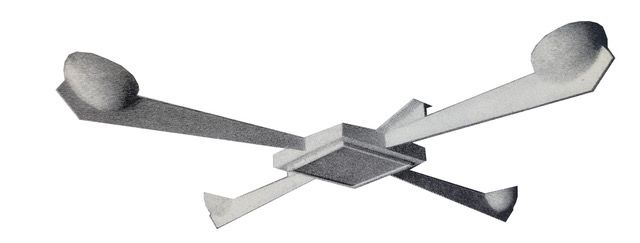Francis Jourdain

(1876-1958)
Adolf Loos had announced that ornament can only appeal to the primitive side of us. However, a civilized person will only enjoy a powerful form that is the successful expression of a real function<<.
These words, quoted in The Studio in 1929, left no doubt about Jourdain’s views on the “mania for decoration, the abundance of ornament and the aesthetic attitude associated with it.” He started out as a painter and showed his pictures at the exhibitions of the Société des Artistes Indépendants. There he exhibited together with important colleagues such as Cézanne, Toulouse-Lautrec, Matisse, van Rysselberghe, Kandinsky, and Maurice Denis. In 1912 he founded the Atelier Moderne and designed wallpapers, carpets, and ceramics in cheap materials for the masses.
During his work as a designer, Jourdain quickly realized that electricity and scientific progress also brought with them new design tasks. His model furnishings were regularly shown in the Autumn Salon until 1938. These were also exhibited by the Union des Artistes Modernes since 1930. They succinctly embodied his theory that “the meaning of a house, a soup bowl or a chair cannot be purely decorative.” A children’s home (1920), a dining room (1923) and a high school (1925), which he designed, show his preference for right angles. His lamp designs are no different. Ceiling lamps, appliques, backward-lit panels made of colored glass and illuminated tables are characteristic. He produced these in collaboration with André Salomon in 1937 for the light pavilion at the International Exhibition. They are characterized by architectural practicality.
Source: Alastair Duncan, Lampen Lüster Leuchter, Jugendstil Art Déco, Prestel-Verlag, München 1979, p.173-174.

RSA Antiquitäten Wiesbaden is your antiques dealer in the Rhine-Main area. A large selection of original Art Deco, Biedermeier and Baroque furniture: high quality and exclusive. At RSA Antiquitäten Wiesbaden you can expect a large selection of expertly restored antiques. Exhibits from the Louis Seize, Biedermeier, and Art Deco periods are available.
The following artist glossary: Gabriel Guévrékian

-
RSA Antiquitäten Wiesbaden
-
Taunusstraße 34
65183 Wiesbaden -
+49 611 5 29 05 70
-
+49 170 7 83 01 13
-
info@antiquitaeten-wiesbaden.de
-
Mondayclosed
-
Tuesday - Friday12 a.m. - 6 p.m.
-
Saturday10 a.m. - 4 p.m.